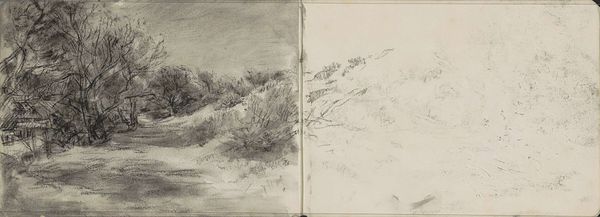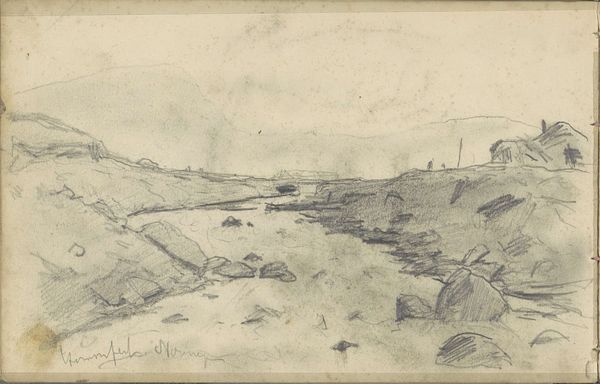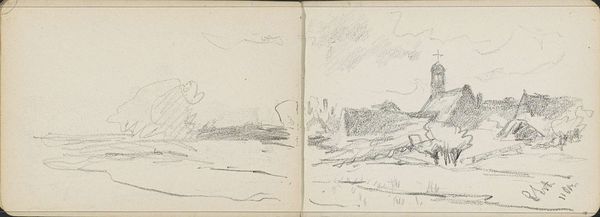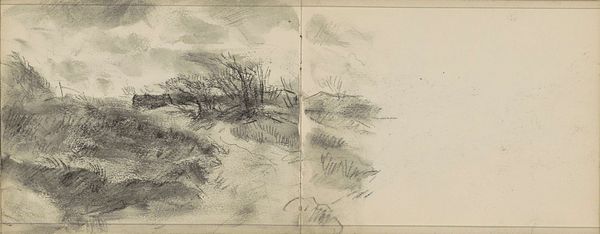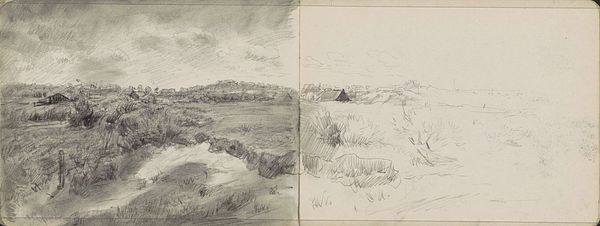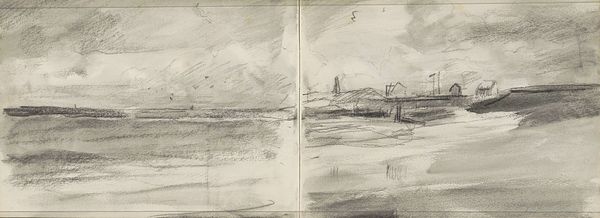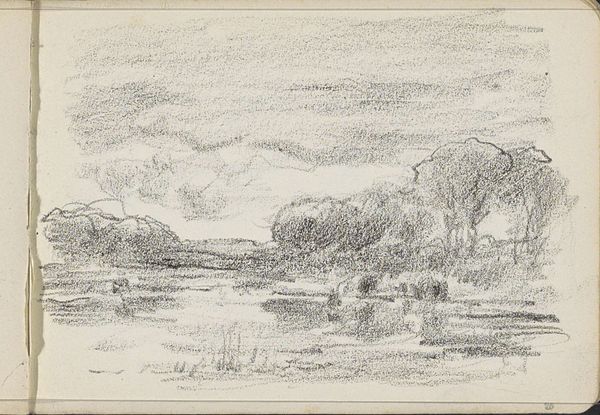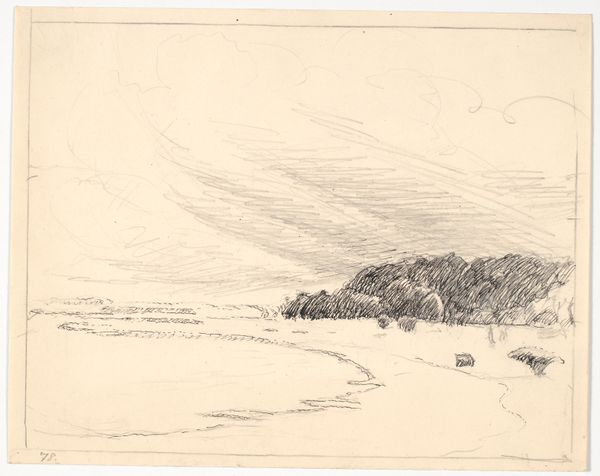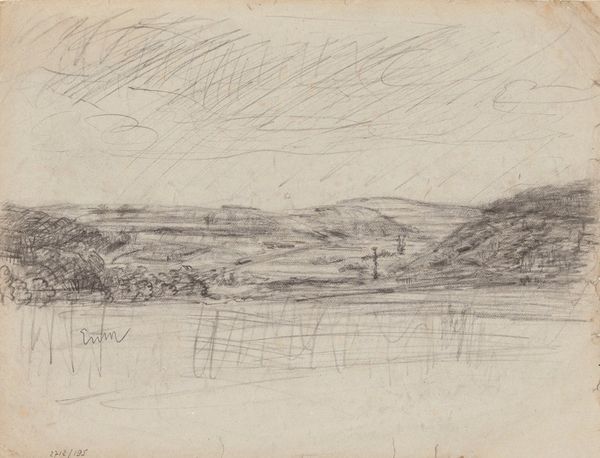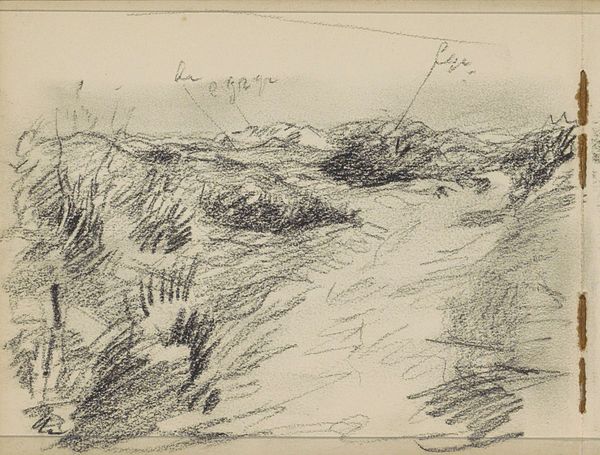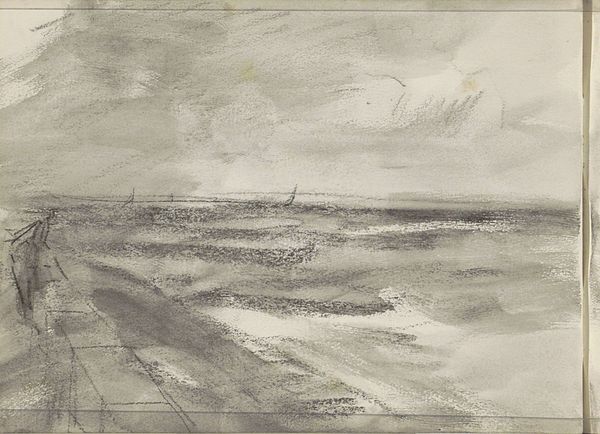
#
amateur sketch
#
light pencil work
#
pencil sketch
#
incomplete sketchy
#
personal sketchbook
#
pen-ink sketch
#
sketchbook drawing
#
sketchbook art
#
watercolor
#
initial sketch
Copyright: Rijks Museum: Open Domain
Editor: This is "Duinlandschap," a pencil and watercolor sketch by Johan Antonie de Jonge, dating between 1881 and 1927. It seems like a casual, almost unfinished piece, capturing a dune landscape. What stands out to you about it? Curator: What I find interesting is how the materiality of the sketchbook itself informs our understanding. This isn’t meant to be a polished “art object,” but rather a document of process, of labor. We’re seeing de Jonge at work, grappling with the landscape. Notice the varying pressure of the pencil, the almost hasty application of watercolor. This reveals the immediate interaction between the artist, the material, and the environment. How might the mass production of affordable art materials in this era have impacted artistic practices like this one? Editor: That's a fascinating perspective. I hadn’t considered the impact of readily available materials on such sketches. So, instead of viewing it solely as a landscape study, we can see it as a record of artistic labor and the accessibility of artmaking itself? Curator: Exactly. We can examine the relationship between the production of these materials, De Jonge’s artistic process, and ultimately, how art consumption changed as a result. Think about it: this very image exists now because of widespread access to relatively inexpensive materials and the culture that promoted art creation. Where was De Jonge likely positioned to execute this sketch and how may the context around that specific landscape alter how we interpret the artwork? Editor: That's really insightful. I was initially drawn to the image for its simplicity, but understanding the material context gives it a much richer meaning. It encourages us to think about art not just as a finished product, but as a process embedded in a specific social and economic reality. Curator: Precisely. By centering our analysis on process and materials, we begin to question traditional hierarchies between high art and what is typically seen as mere craft. Editor: I'll definitely look at sketches in a different way now, appreciating the story they tell about the artist's practice and the materials they used. Curator: And remember, it's all connected – from the graphite mine to the museum wall.
Comments
No comments
Be the first to comment and join the conversation on the ultimate creative platform.
